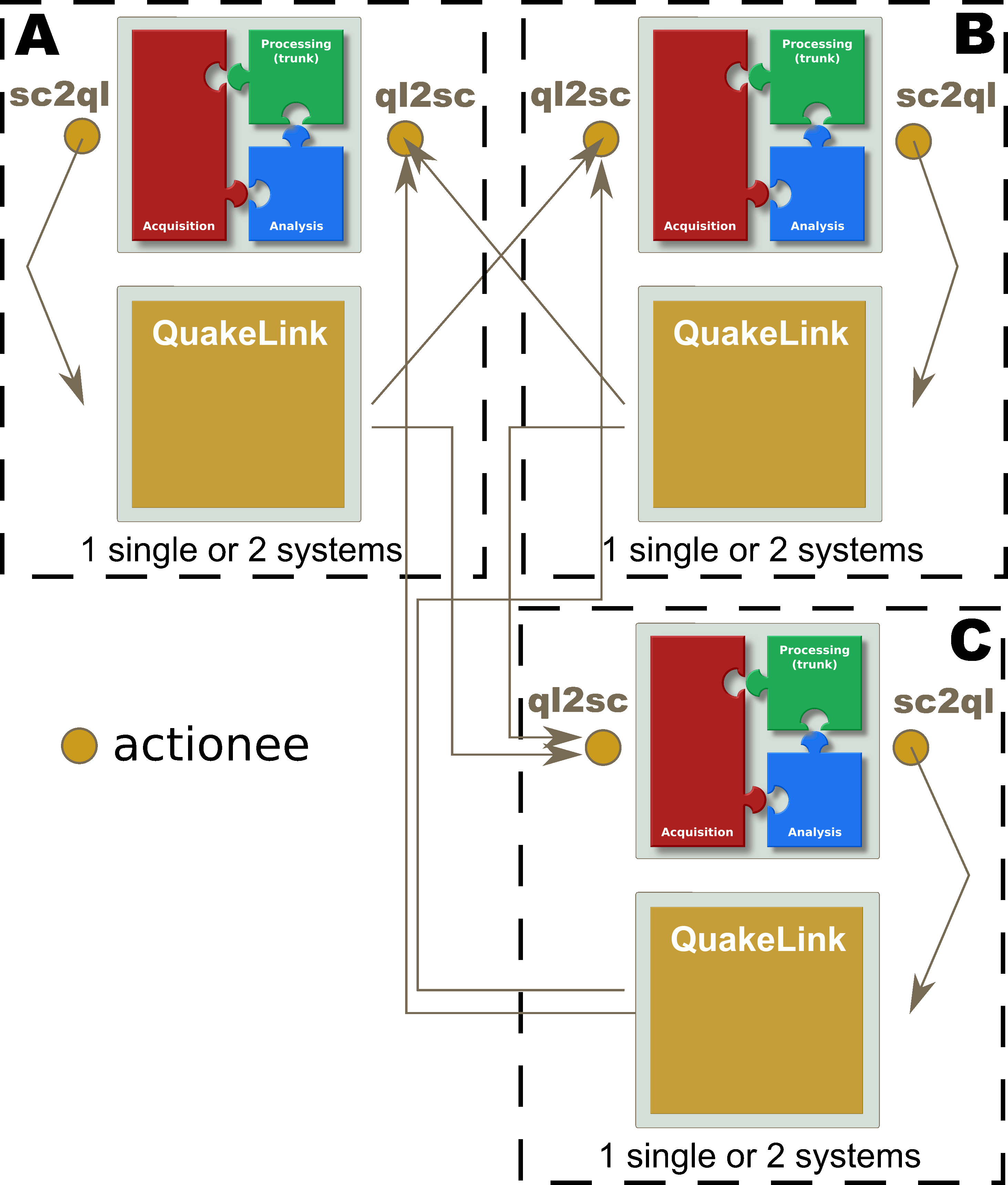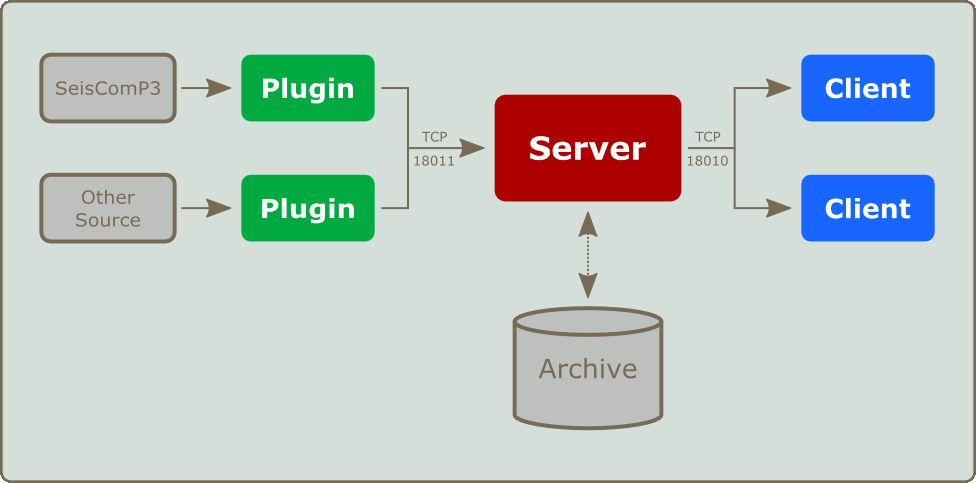Introduction¶
QuakeLink was developed to exchange event data and Did-you-feel-it (DYFI) reports where security, performance and reliability are a primary focus.
The QuakeLink package is used for:
Exchanging event data and Did-you-feel-it (DYFI) reports between 2 or more systems.
Providing fast and secure access to event data via a web interface to external clients.
Importing event parameters from external or local SeisComP systems, QuakeLink server or FDSNWS into a local SeisComP system or a QuakeLink server in real time.

Figure 36: Secure parameter exchange between 3 SeisComP systems. The description is given in Examples.¶
Features¶
QuakeLink includes the following features:
Exchange of SeisComP objects is triggered by event updates. No messages will be exchanged until the exporting SeisComP system has produced an event.
Complete event parameter exchange including Events, Origins, Amplitudes, Picks and FocalMechanisms.
Secure protocol solves security issues:
No access to local SeisComP by system foreigners.
User/password authentication including SSL.
Fined-grained access control lists including IP addresses, SeisComP object subsets and many more.
Fast event access even to large databases.
SQLite database for event indexing.
No events are missed on downtime.
Reduced bandwidth consumption through server-side filters.
Fast event exchange in real-time or time window based.
Full event log (replacement of scevtlog).
Event archive file structure:
2014/09/09/eventid/eventid.(N).xml.gz.QuakeLink protocol with telnet interface.
HTTP interface similar to FDSNWS (GET + POST).
QuakeLink can be configured using scconfig [2].
QuakeLink provides earthquake parameters to EQInfo, an Android-based gempa App for customized earthquake information world-wide. EQInfo is freely available e.g. from Google Play [1] or App Store [2].
Architecture¶
QuakeLink provides quakelink, a server that collects data from SeisComP systems using QuakeLink plugins. The data is stored in the database and provided to clients. The clients may be other SeisComP systems, web browsers or other applications such as EQInfo. Frontend applications allow direct user-interaction with the server and the database.

Figure 37: QuakeLink architecture.¶